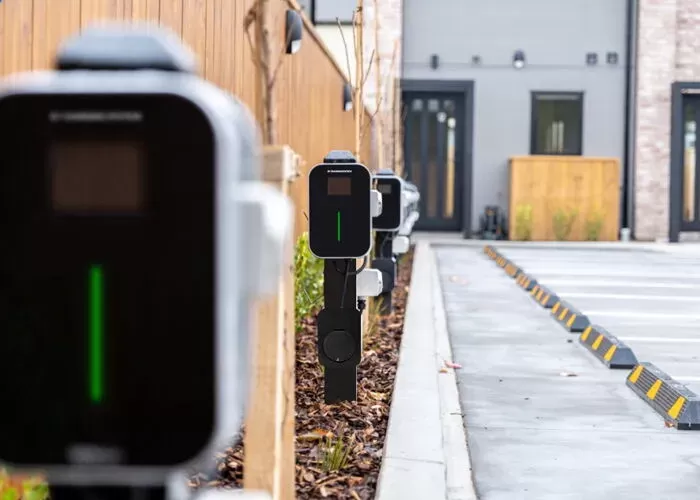Notifications

4 minutes, 17 seconds
-3 Views 0 Comments 0 Likes 0 Reviews

Understanding AC EV Charging: What You Need to Know
Introduction
As a leading EV charger manufacturer in China, Topper Company provides reliable electric vehicle charging equipment and comprehensive charging solutions.
As electric vehicles (EVs) become more mainstream, the need for reliable and efficient charging infrastructure grows. Among the most accessible and widely used options is AC (Alternating Current) charging, which powers EVs at homes, offices, and public locations using the same electricity that runs household appliances.
This article explores what AC charging is, how it works, its advantages and limitations, and why it plays a vital role in the EV ecosystem.
What is AC Charging?
AC charging delivers electricity to EVs in alternating current form—the standard used in homes and businesses. It’s the most common charging method globally because it works seamlessly with existing electrical infrastructure.
EVs equipped with an onboard charger convert the incoming AC power into direct current (DC), which is then stored in the vehicle’s battery.
Types of AC Charging
Level 1 Charging
Voltage: 120V
Speed: ~2–5 miles of range per hour
Use: Plugged into a standard household outlet
Best for overnight home charging or for drivers with short daily commutes.
Level 2 Charging
Voltage: 240V
Speed: ~10–60 miles per hour
Use: Homes, offices, and public stations
Requires a dedicated outlet and often installed by a licensed electrician. It’s the preferred solution for faster daily charging.
When is AC Charging Ideal?
Overnight at Home: Plug in at night and wake up to a full battery.
While Working: Office parking lots often provide chargers for daytime use.
Running Errands: Many shopping centers now feature Level 2 stations.
Remote Workdays: Charge slowly during the day without stressing your system.
Safety Features of AC Charging
Modern AC chargers include:
Ground Fault Protection: Prevents electric shock.
Overcurrent Protection: Stops overloads.
Temperature Sensors: Avoids overheating.
Auto Shutoff: Ends charging when full.
Surge Protection: Guards against power spikes.
These features ensure a safe experience for both vehicle and user.
Pros of AC Charging
Affordable Installation: Level 1 uses existing outlets; Level 2 is easy for electricians to install.
Lower Operating Costs: Energy-efficient and low maintenance.
Better Battery Health: Slower charging produces less heat, preserving battery life.
Widespread Availability: Found in homes, offices, and public spaces.
Broad Compatibility: Most EVs support AC charging via standard ports like J1772.
Cons of AC Charging
Slower Charging: Not ideal for quick top-ups or long trips.
Limited Power Output: Charging large EVs can take 8–12 hours.
Potential Upgrades Needed: Older homes may need panel updates for Level 2.
AC vs. DC Charging (Quick Look)
| Feature | AC Charging | DC Charging |
|---|---|---|
| Speed | Slower (2–60 mph) | Fast (80% in ~30 mins) |
| Cost | Lower | Higher |
| Ideal Use | Home/workplace | Highway/public stations |
| Battery Impact | Gentler | Greater wear over time |
Conclusion
AC EV charging is the foundation of everyday electric vehicle use. With its affordability, ease of installation, and gentle effect on battery health, it’s the top choice for home and workplace charging. As EV adoption accelerates, AC charging will remain essential in building a cleaner, more convenient, and future-ready transportation system.Learn more about Google SEO.
China EV Chargers EV Charger Manufacturer EV Charging Solutions

